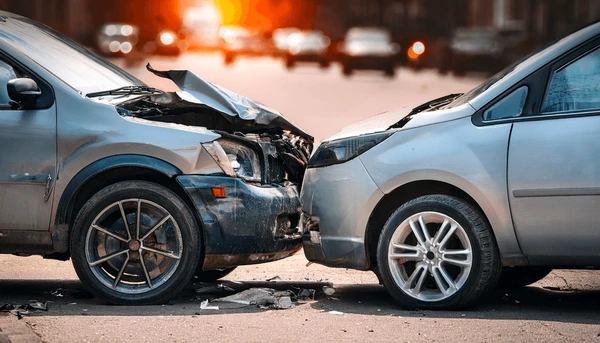Car accidents happen in an instant, but the aftermath can feel overwhelming. Knowing exactly what to do after a car accident can protect your health, strengthen your legal rights, and ensure you receive fair compensation.
At TitoParaTi, we help Californians navigate the confusion that follows a crash. This guide outlines the step-by-step actions you should take, answers common questions, and explains how an experienced California car accident lawyer can make all the difference.
Immediate Steps After a Car Accident
What is the first procedure you should follow immediately after an accident?
Your first priority is safety. Before exchanging information or worrying about insurance, make sure you and others are out of danger.
Check for injuries and call 911
-
Assess yourself, passengers, and others involved.
-
If anyone is hurt, dial 911 immediately. Emergency responders can provide lifesaving treatment and document the injuries in official reports.
-
Even if the accident seems minor, calling the police ensures there is a legal record.
Move to a safe location if possible
-
If vehicles are drivable, move them out of traffic to a safe shoulder.
-
Turn on hazard lights and use cones/flares if available.
Contact law enforcement and file a police report
-
In California, you are required to report accidents involving injuries, death, or property damage over $1,000.
-
A police report provides a neutral record of the scene, which is invaluable when filing insurance claims or pursuing compensation.
Documenting the Accident Scene
Exchange information with drivers and witnesses (but don’t discuss fault)
-
Collect names, phone numbers, addresses, driver’s license numbers, license plates, and insurance details.
-
Get contact information for any witnesses.
-
Do not admit fault — even polite apologies can be misinterpreted.
Record vehicle and driver details
-
Write down the make, model, year, and color of all vehicles involved.
-
Note location, time, and weather conditions.
Take photos and videos of the accident scene
-
Photograph vehicle damage, skid marks, traffic signals, and surrounding areas.
-
Take wide shots for context and close-ups for detail.
Gather witness statements
-
If bystanders saw the accident, ask for their version of events.
-
Independent accounts can strengthen your case when fault is disputed.
Seeking Medical Attention
Why you should get checked even if you feel fine
Many accident-related injuries, such as whiplash, concussions, or internal bleeding, may not show symptoms immediately. A doctor’s evaluation ensures your injuries are documented and treated early.
Documenting your injuries for a claim
-
Save all medical records, hospital bills, and prescriptions.
-
Keep a journal of your symptoms and how they impact your daily life.
What should you do immediately whenever an accident occurs and you’re hurt?
-
Seek emergency treatment or urgent care.
-
Notify medical providers that your injuries are from a car accident so they document it correctly for legal and insurance purposes.
Insurance and Reporting Requirements
When and how to notify your insurance company
-
Most policies require prompt reporting, often within 24–48 hours.
-
Provide basic facts only. Avoid recorded statements without speaking to a lawyer.
Should I file a claim with my insurance if I’m not at fault?
Yes — even if the other driver caused the accident, your insurer may help cover medical bills and repairs under MedPay or collision coverage. They may later seek reimbursement from the at-fault driver’s insurer.
What are three important things to do when you file a claim?
-
Report the accident promptly.
-
Provide supporting documentation (photos, police reports, medical records).
-
Track all communication and expenses related to the crash.
California DMV Form SR-1 explained
-
California law requires drivers to file an SR-1 Accident Report with the DMV within 10 days if the accident caused injury, death, or property damage exceeding $1,000.
-
Failing to file may result in license suspension.
👉 Access SR-1 Form on the California DMV website.
Legal Considerations After a Car Accident
California’s comparative negligence rule
California follows a pure comparative negligence system. This means you can still recover damages even if you were partially at fault — but your compensation is reduced by your percentage of fault.
How long after an accident can you file a claim in California?
-
Personal injury claims: 2 years from the date of the accident.
-
Property damage claims: 3 years.
-
Insurance claims: check your policy — deadlines may be shorter.
Why consulting a lawyer early matters
-
Lawyers handle insurance adjusters who may undervalue your claim.
-
An attorney ensures deadlines are met and evidence is preserved.
-
Representation levels the playing field against insurance companies.
Common mistakes to avoid after a crash
-
Admitting fault or apologizing.
-
Skipping medical care because injuries “don’t feel serious.”
-
Posting about the accident on social media.
-
Accepting the first settlement offer without legal review.
Types of Compensation You May Recover
Economic damages (medical bills, lost wages)
Covers hospital stays, rehabilitation, prescription costs, and time missed from work.
Non-economic damages (pain and suffering)
Compensates for emotional distress, loss of enjoyment of life, and long-term trauma.
Punitive damages
Awarded in rare cases where the at-fault driver acted with extreme negligence, such as drunk driving.
Wrongful death damages
Families of fatal accident victims may seek funeral costs, loss of financial support, and loss of companionship.
Free Consultation
If you or a loved one has been injured in a California car accident, don’t wait. The steps you take now can determine the outcome of your case.
📞 Call TITOparaTI today at 909.909.9090 or fill out our secure online form for a free consultation. Our attorneys are available 24/7 to protect your rights and help you rebuild.




